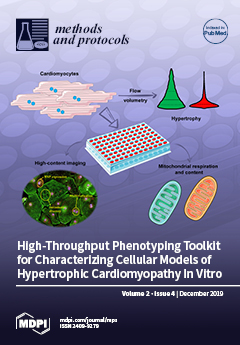DNA in dividing cells is prone to mutagenesis, with mutations making key contributions to human disease including cancer. The tumour suppressor gene
TP53 is the most frequently mutated gene in human tumours. Here, we present a robust protocol for studying
TP53 mutagenesis utilising
[...] Read more.
DNA in dividing cells is prone to mutagenesis, with mutations making key contributions to human disease including cancer. The tumour suppressor gene
TP53 is the most frequently mutated gene in human tumours. Here, we present a robust protocol for studying
TP53 mutagenesis utilising human
TP53 knock-in (Hupki) mouse embryonic fibroblasts (HUFs). In the HUF immortalisation assay (HIMA), primary HUFs are treated with known or suspected carcinogens at 3% oxygen and then transferred to 20% atmospheric oxygen to induce senescence. Cells containing mutations (e.g., in
TP53) that allow bypassing of senescence eventually emerge as immortalised clonal cell lines after 2–3 months of serial passaging. As not all immortalised HUF cells contain
TP53 mutations, we developed a Nutlin-3a counter-screen to select for
TP53-mutated clones prior to sequencing.
TP53 mutation spectra generated can be compared with those of human tumours recorded in the International Agency for Research on Cancer TP53 mutation database. Environmental mutagens that have demonstrated and validated the utility of the HIMA include ultraviolet radiation, aristolochic acid, and benzo[
a]pyrene. The
TP53 mutation patterns induced by these mutagens in the HIMA corresponded to those found in human tumours from patients exposed to these mutagens. The approach presented helps to deepen our understanding of human cancer aetiology.
Full article






